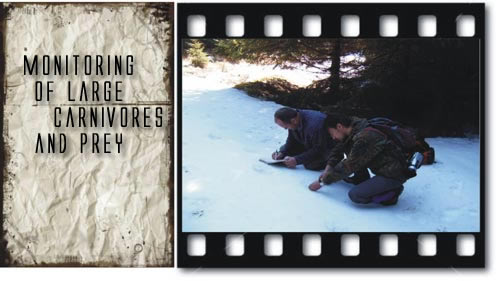|
| Monitoring of large carnivores & prey |

|
In order to evaluate large carnivores and prey populations, there will be used different techniques, such as:
-VHF localization (radio telemetry)
-GPS localization (Global Positioning System)
-Localization with the help of cameras
-Estimating species’ relative abundance with hair traps
The most encountered modality for estimating and understanding large carnivores’ territory, the status and biology of these species is radio-telemetry. The European Council considers radio monitoring, GPS and satellite as an activity essential in elaborating management plans, as it is foreseen in the action plans for bear, wolf and lynx. Following the animal’s noose release activities, especially for bears, it has been observed that there is a risk for animals to die from injuries. That is why rescuing activities will be followed by activities of radio-monitoring with the purpose of obtaining 100% efficiency; these activities will increase the data quantity and will allow promoting utile actions of conservation.
Also, large carnivores’ evaluation will be made using non-invasive techniques, allowing the creation of a database. This is necessary for establishing new management plans for protected areas that will be proposed as Natura 2000 sites.
For the beginning was established a methodology for assessing large carnivores and prey species, the study being projected on a 3 year period. This interval allows establishing intermediary reports used in management plans for Natura 2000 sites, and the realisation of studies regarding habitats occupation for a series of species in multiple seasons.
Large carnivores populations are considered closed populations, without emigrant and immigrants. For estimating relative abundance is used the Mark Capture-Recapture program, for projecting the Hawth’s Tools study (establishing the sampling grid of 3x3 km, and selecting sampling points), for habitats occupation the Presence study, and for the visual conditioning of data, ArcGis and Manifold.
The Methodology contains:
-short description of the utilised techniques,
-sampling modalities,
-modalities of installing equipments,
-installing sites (randomised selection)
-recording and realising data forms
|
|






